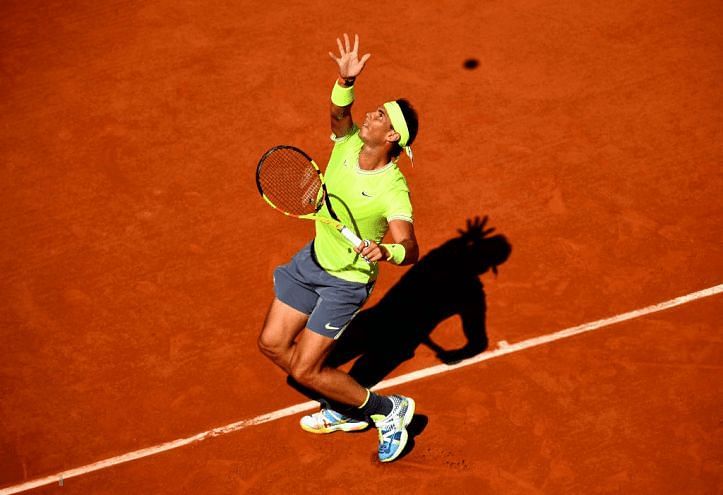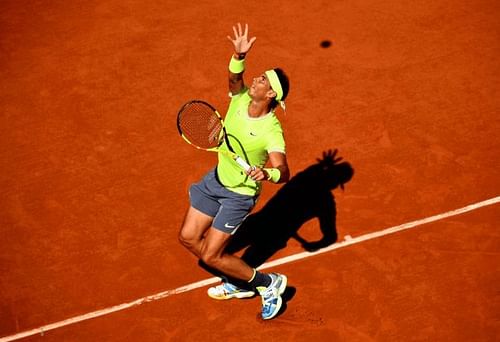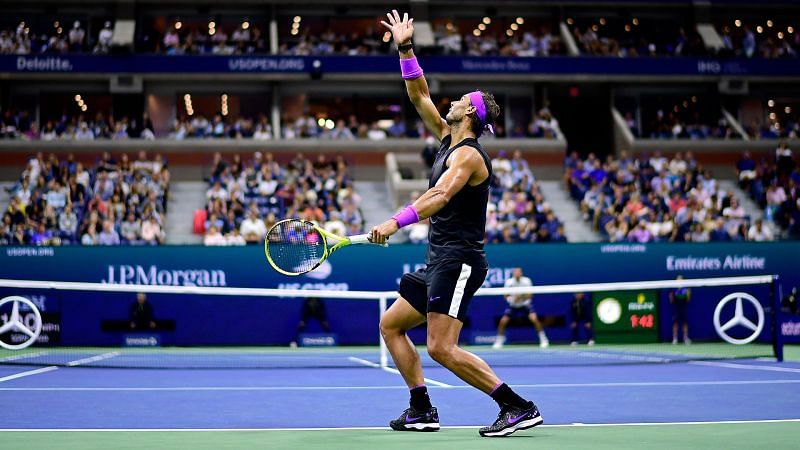
Alex Corretja reveals the secret behind Rafael Nadal's 'new' serve

1998 and 2001 Roland Garros finalist Alex Corretja has revealed a few secrets about his compatriot Rafael Nadal's new serve. As part of Eurosport's ongoing "Players' Cut" series on Rafael Nadal, Corretja spoke at length about the changes the 19-time Slam champion has made to his serve - and how they have benefited him.
The 33-year-old has a formidable all-court game, as evidenced by his haul of six Slams outside the clay of Roland Garros (where he has won a staggering 12 titles). However, the serve hasn't always been the most potent weapon in Nadal's arsenal.
Rafael Nadal's serve is not the biggest, nor is it the most accurate. He does have the advantage of leftiness though; Nadal's wide serve in the ad court can stretch right-handers beyond the tramlines, either producing a service winner or a weak reply that the Spaniard can put away.
Nadal's high-kicking serve to the backhand side, especially on clay, is especially discomfiting for a right-hander like Roger Federer, who has a single-handed backhand. On the other hand, against someone like Novak Djokovic who has a strong double-handed backhand, that serve is not as effective.
Over time, Rafael Nadal has had to evolve his game in a bid to reduce the wear and tear on his body and stay competitive for longer. And one of the areas that has seen a major change is his serve.
Alex Corretja dissects Rafael Nadal's new serve

Rafael Nadal's long-standing coach Francesco Roig said this about the Spaniard's game at the 2019 US Open, which Nadal went on to win:
"We have to constantly improve; it isn’t just about his overall game, but his ‘feel’ for the game. That’s not something that happens overnight, or you just happen upon. It’s the next step of improving one’s game. His ability to listen and absorb is extraordinary. It’s a virtue; it allows us as coaches to have a dialogue with him, point out specifics and know he’s on the same wavelength.”
Rafael Nadal's new serve has yielded him rich dividends. The 33-year-old now serves faster, sharper and with more confidence. The 19-time Grand Slam champion also earns points at a quicker rate, and wins matches more efficiently.
In this respect, Alex Corretja spoke in detail about the dynamics of Rafael Nadal's new serve.
Corretja pointed out three specific aspects of the new Rafael Nadal serve. During his earlier service motion, the Spaniard had his knees bent almost akin to sitting on a chair. With his new serve, Nadal's knees are straighter.
Secondly, in his new servicing motion the 19-time Grand Slam opens up his wrists better than he used to previously.
"The hands go up, down high and land on the other side of the court with speed," said Corretja.
Thirdly, because Rafael Nadal's new serve is delivered from a more upright position compared with the earlier one, the Spaniard is quicker at getting into position for the follow-up shot. That in turn helps him make his trademark serve+1 forehand, or aggressive crosscourt backhand (if the return comes to his other flank), more effective.
That last aspect of Rafael Nadal's new serve is particularly helpful on faster surfaces, as was exemplified by his run to a fourth title in Flushing Meadows last year. A month before that Rafael Nadal had also beaten Daniil Medvedev in the Coupe Rogers final, thus successfully defending a hardcourt title for the first time in his career.
Rafael Nadal met the same opponent in the US Open final, where his serve improvements came to the fore again. Despite relinquishing a lead of two sets and a break, and then going break points down while serving for the Championship, Nadal's serve bailed him out just in time.